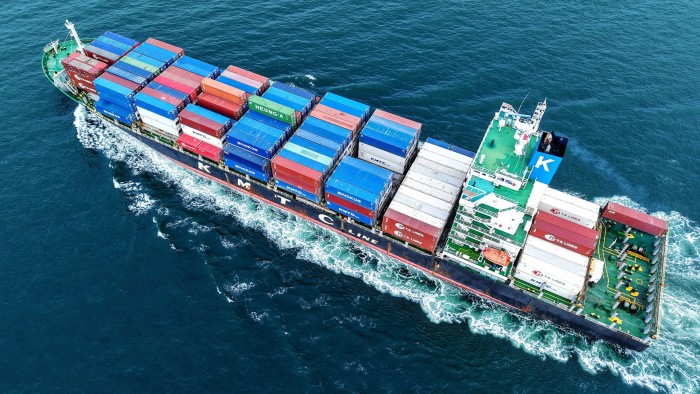Stay informed with free updates
Simply sign up to the Chinese trade myFT Digest — delivered directly to your inbox.
Chinese exports rose 5.8 per cent year on year in dollar terms in June, beating expectations as companies used a tariff truce with the US to ship goods ahead of an August deadline for a more definitive deal.
The strong trade figures released on Monday came ahead of this week’s GDP data for the second quarter that is also expected to please Beijing, as policymakers seek to stimulate a weak domestic economy while navigating geopolitical turmoil.
But the first-half trade data could sway the Trump administration to tighten its tariff noose on China and the south-east Asian countries that it accuses of permitting transshipment, or rerouting Chinese goods to the US.
China’s June export growth beat a 5 per cent rise predicted by analysts in a Reuters poll as well as 4.8 per cent growth in May.
Imports last month rose 1.1 per cent on a year earlier in dollars, less strong than analysts’ forecasts of 1.3 per cent but reversing a 3.4 per cent decline in May and marking the first expansion since December.
Chinese President Xi Jinping’s government has depended on exports to boost GDP growth at a time when domestic consumption has lagged amid a prolonged property sector slowdown.
Beijing has also invested heavily in manufacturing to try to meet its GDP target for this year of about 5 per cent. Analysts are forecasting that China will report second-quarter GDP growth on Tuesday in excess of that target, at about 5.1 per cent year on year.
China’s benchmark CSI 300 index of Shanghai- and Shenzhen-listed stocks rose 0.2 per cent on Monday while the renminbi was flat at Rmb7.17 per dollar.
While Beijing did not immediately release dollar-denominated figures for trade with individual countries, exports to the US fell 9.9 per cent year on year in renminbi terms between January and June, while its imports declined 7.7 per cent.
Exports to EU, meanwhile, rose 7.9 per cent in the first half of the year in renminbi terms while imports dropped 4.8 per cent.
The rise comes ahead of a summit next week in Beijing between European Commission President Ursula von der Leyen and President Xi at which the bloc is expected to express its concern about the diversion of Chinese products to its markets.
Exports to countries in the Association of Southeast Asian Nations, which the US accuses of transshipment of Chinese exports, rose 14.3 per cent, while imports increased 2.3 per cent in the first half.
Exports to Russia dropped 7.4 per cent over the same term, while imports decreased 8.6 per cent.
Yuhan Zhang, principal economist at The Conference Board’s China Center, said China’s overall first-half trade surplus was driven by weak imports and resilient exports.
“Exports of robots have increased significantly, indicating China’s robust domestic industrial policies in advanced manufacturing, its strategy of diversifying export markets, and the global technology trend and external demand,” Zhang said.
He added that China was diversifying its trade geographically, boosting exports to south-east Asia, Africa, central Asia and the EU while shipments to the US declined.
“Tariffs and geopolitical tensions will likely be a drag by late 2025 unless offset by new stimulus and diversification,” he said.
Data visualisation by Haohsiang Ko in Hong Kong
Source link









